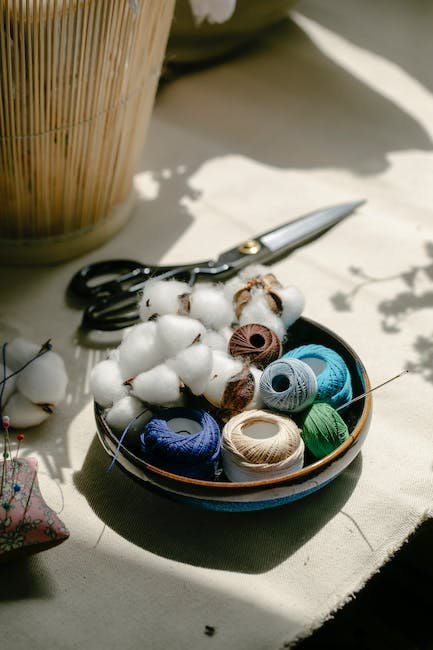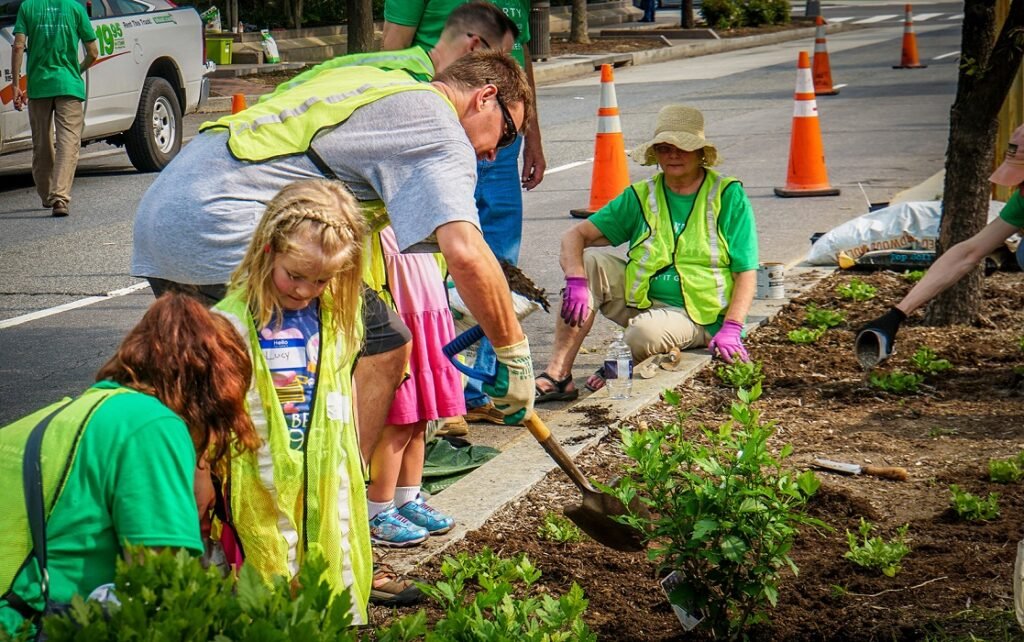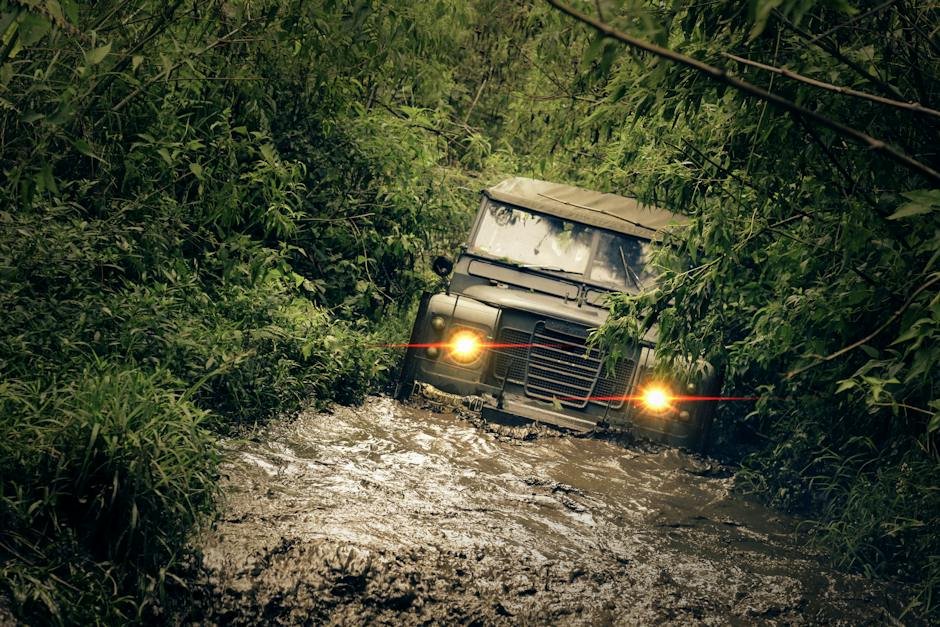Now Reading: How to Make Your Own DIY Seaweed Foraging Kit
-
01
How to Make Your Own DIY Seaweed Foraging Kit

How to Make Your Own DIY Seaweed Foraging Kit
The salty breeze caresses your face as you stroll along the shore, eyes eagerly scanning the rocky landscape for treasure. But instead of shells or colorful pebbles, you’re on the hunt for something unique and utterly delicious: seaweed. Imagine the satisfaction of gathering this edible marine vegetation, bursting with nutritional benefits, straight from the wild. In this article, we will guide you through the steps of creating your very own DIY seaweed foraging kit, equipping you with everything you need to embark on this exciting culinary adventure. Get ready to reconnect with the ocean’s bounty in a way you’ve never experienced before.
Table of Contents
- Heading 1: Exploring the Benefits of Seaweed Foraging: A Guide to Getting Started
- Heading 2: Gathering the Essentials: Building Your Own DIY Seaweed Foraging Kit
- Heading 3: Choosing the Right Tools: A Detailed Breakdown of Necessary Equipment
- Heading 4: Safety First: Expert Recommendations for Responsible Seaweed Foraging
- Heading 5: Maximizing Your Harvest: Pro Tips for Identifying, Collecting, and Storing Seaweed
- Q&A
- Concluding Remarks

Heading 1: Exploring the Benefits of Seaweed Foraging: A Guide to Getting Started
Exploring the Benefits of Seaweed Foraging: A Guide to Getting Started
Discover the incredible world of seaweed foraging and unlock a treasure trove of nutrition and sustainable living. Seaweed, often overlooked, holds an abundance of health benefits and offers a unique culinary experience like no other. Not only is it packed with essential vitamins and minerals, but it is also a versatile ingredient that can enhance the flavors of your favorite dishes.
Getting started with seaweed foraging is an adventurous journey that allows you to connect with nature while reaping its rewards. Here are a few key tips to embark on your seafaring exploration:
- Know your tides: Before setting out to explore the coastline, familiarize yourself with the tide schedule. Timing is crucial, as low tides provide the best opportunity for spotting and collecting various seaweed species.
- Identify your target: Educate yourself on the different types of seaweed found in your region. Learning to distinguish between kelp, nori, dulse, and other varieties will help you gather the ones that match your culinary preferences.
- Harvest ethically: Responsible foraging ensures the sustainability of the marine ecosystem. Only collect seaweed from areas with an abundance and take care not to damage the plants or their habitats. Aim for a minimal impact and leave plenty for future foragers and the marine life.
Embarking on your seaweed foraging journey will not only introduce you to a new world of sustainable and nutritious food but also promote a deeper understanding and appreciation for our planet’s delicate ecosystems. So don your wetsuit, carry your trusty handbook, and let the ocean guide you towards a rewarding experience with the wonders under the sea.

Heading 2: Gathering the Essentials: Building Your Own DIY Seaweed Foraging Kit
Gathering the Essentials: Building Your Own DIY Seaweed Foraging Kit
Embarking on a seaweed foraging adventure can be an exciting and fulfilling endeavor. However, to ensure a successful and organized outing, it’s essential to have the right tools at your disposal. Building your own DIY seaweed foraging kit can make the experience even more enjoyable. Here are a few essentials to consider:
- Seaweed Field Guide: A reliable field guide is like having a knowledgeable companion by your side. Look for one that includes detailed descriptions, photographs, and information on the various types of seaweed you may encounter. This will help you identify and learn about the seaweed species you discover.
- Basket or Mesh Bag: A sturdy basket or mesh bag is ideal for collecting your seaweed finds. It allows for proper drainage while preventing excessive water retention.
- Gloves and Scissors: Protect your hands from potential sharp or prickly edges by wearing gloves. A pair of sharp, clean scissors will come in handy for cutting seaweed without causing unnecessary damage.
- Waterproof Container: Preserve the freshness and prevent wilting of your collected seaweed by storing it in a waterproof container or plastic bag. Ensure the container has adequate ventilation to avoid excessive moisture build-up.
- First Aid Kit: Safety should always be a priority. Carry a basic first aid kit with essentials like bandages, antiseptic wipes, and tweezers in case of any minor cuts or scrapes.
A well-prepared DIY seaweed foraging kit can make your excursions more organized, educational, and enjoyable. Remember to respect the environment and adhere to local regulations while exploring the rich and diverse world of seaside vegetation.

Heading 3: Choosing the Right Tools: A Detailed Breakdown of Necessary Equipment
Gearing up for a new project can be both exciting and overwhelming. With so many tools and equipment options available, it’s essential to choose the right ones that will help you accomplish your tasks efficiently. In this section, we will provide a detailed breakdown of the necessary equipment needed to tackle any project with confidence!
Power Tools:
- Drill: An essential tool for creating holes or driving screws effortlessly. Look for a drill with variable speed settings and a removable chuck for versatility.
- Saw: Whether it’s a circular saw for straight cuts or a jigsaw for intricate shapes, having a reliable saw is crucial for woodworking or construction projects.
- Sander: A sander is your best friend when it comes to smoothing surfaces or removing old finishes. Consider a random orbital sander for a flawless finish without swirl marks.
Hand Tools:
- Hammer: A classic tool for driving nails or removing them. Choose a hammer with a comfortable grip and a weight that suits your strength.
- Screwdriver Set: An assortment of screwdrivers in different sizes and types will come in handy for various tasks, from assembling furniture to repairing electronics.
- Measuring Tape: Accurate measurements are crucial for any project. Invest in a quality measuring tape with both imperial and metric units for versatility.
Remember, choosing the right tools not only ensures efficient work but also contributes to the overall quality of your results. With this breakdown of necessary equipment, you’ll be well-equipped to take on any DIY project or professional endeavor!

Heading 4: Safety First: Expert Recommendations for Responsible Seaweed Foraging
Safety First: Expert Recommendations for Responsible Seaweed Foraging
When it comes to seaweed foraging, embracing safety measures is paramount to ensure a harmonious and sustainable relationship with our marine ecosystems. To help you navigate the world of seaweed gathering responsibly, we’ve gathered expert recommendations that will safeguard both you and the environment.
1. Know your seaweed: Before setting out on a foraging adventure, familiarize yourself with the different species of seaweed that can be found in your area. Get to know their characteristics, such as color, texture, and size, as well as their ecological importance. This knowledge will help you distinguish between edible and protected species, preventing unintentional harm to delicate marine habitats.
2. Respect local regulations: Each coastal area may have different rules and regulations regarding seaweed foraging. Research and adhere to these guidelines to ensure you are foraging within legal limits and not causing harm to protected areas or endangered species. By following the laws, you contribute to the preservation and conservation of fragile marine ecosystems.
3. Harvest sustainably: Responsible harvesting practices are vital in maintaining the health of seaweed ecosystems. Avoid over-harvesting by only taking a small portion of healthy seaweed plants, ensuring they have the opportunity to regenerate and sustain their population. Use sharp scissors or a knife to make clean cuts and avoid damaging surrounding seaweed or marine organisms in the process.
4. Be aware of tides and weather conditions: Always check the tide times and weather conditions before embarking on a seaweed foraging expedition. High tides and stormy weather can make foraging hazardous or disrupt fragile habitats. It’s essential to prioritize personal safety and the well-being of the marine environment, so choose the right time to explore and collect seaweed.
By embracing these expert recommendations, you can embark on a responsible seaweed foraging journey while preserving the beauty and diversity of our oceans. Remember, safety and responsibility go hand in hand when it comes to exploring and enjoying the wonders of the sea.
Heading 5: Maximizing Your Harvest: Pro Tips for Identifying, Collecting, and Storing Seaweed
Seaweed is not just another form of marine vegetation; it is a treasure trove of nutrients and flavors waiting to be discovered. Whether you are a seasoned seaweed connoisseur or just starting your journey, these pro tips will ensure you maximize your harvest and make the most of this incredible resource.
1. Identifying the Right Seaweed: It’s crucial to correctly identify the type of seaweed you are harvesting to ensure you are getting the best quality. Familiarize yourself with the different species, like nori, kelp, and wakame, by studying their distinctive features and growth patterns.
2. Techniques for Collection: When it comes to harvesting seaweed, the key is to do it sustainably and with utmost respect for the marine ecosystem. Look for seaweed that is growing abundantly, making sure not to deplete an entire area. Use a sharp pair of scissors or a knife to cut the seaweed close to the base, leaving the holdfast intact for regrowth.
3. Proper Storage and Usage: To keep your harvest fresh and flavorful, it’s essential to store seaweed correctly. Rinse the seaweed thoroughly with fresh water to remove any sand or debris before air-drying it. Once dried, store the seaweed in airtight containers or sealable bags in a cool, dark place. Remember, when it comes to using seaweed in your culinary adventures, a little goes a long way. Experiment with adding it to soups, salads, sushi, or even use it as a nutrient-packed seasoning.
Q&A
What is a DIY seaweed foraging kit?
A DIY seaweed foraging kit is a collection of tools and resources that you can put together yourself to assist in the process of gathering seaweed. It typically includes items like scissors, a mesh bag, gloves, and a guidebook on different types of edible seaweed.
Why should I make my own seaweed foraging kit?
Making your own seaweed foraging kit allows you to customize it to your specific needs and preferences. It can also be a fun and educational project, helping you learn more about the types of seaweed in your area and how to sustainably harvest them.
What tools should I include in my DIY seaweed foraging kit?
A basic DIY seaweed foraging kit may include scissors for cutting the seaweed, a mesh bag to hold the harvested seaweed, gloves to protect your hands, a waterproof notebook to jot down observations, and a field guide that helps you identify different types of seaweed.
Where can I find the necessary materials for my DIY seaweed foraging kit?
You can often find the tools and materials needed for your DIY seaweed foraging kit at hardware stores, gardening centers, or online retailers. Be sure to choose high-quality scissors and a durable mesh bag to ensure your kit lasts.
What safety precautions should I take when using a seaweed foraging kit?
When using a seaweed foraging kit, it’s important to wear gloves to protect your hands from potential irritants or sharp edges. Additionally, make sure to follow local regulations and only harvest seaweed from clean and unpolluted areas to ensure its safety for consumption.
How do I properly clean and store harvested seaweed using my DIY kit?
To clean harvested seaweed, rinse it thoroughly with cold water to remove any sand, dirt, or debris. Gently pat it dry and store it in a breathable bag or container in the refrigerator, where it can stay fresh for 3-4 days. Remember to use the seaweed within a reasonable time frame to enjoy its taste and nutritional benefits.
Concluding Remarks
As we reach the end of our salty journey, armed with newfound knowledge and enthusiasm, it’s time to bid farewell and set sail towards the possibilities that lie ahead. Creating your very own DIY seaweed foraging kit is no longer a distant dream, but a tangible reality waiting to be embraced.
With a few simple ingredients and a splash of creativity, we have unveiled the secrets to building a kit that speaks to our adventurous souls, allowing us to unlock the bountiful wonders of the ocean. From adventurous beachcombers to curious food enthusiasts, the allure of seaweed foraging transcends borders and welcomes all who seek a connection to nature’s pantry.
Remember, as you embark on your seaweed foraging expeditions, to always be respectful of nature’s delicate balance. Nurture the ocean’s gifts, leaving behind only footprints and taking home extraordinary memories and nourishing treasures. Let the tides guide you through uncharted territories, reminding you that Mother Nature’s mysteries are to be cherished and protected.
Whether you find solace in the rhythmic waves or are captivated by the kaleidoscope of marine life, the DIY seaweed foraging kit acts as your companion, forever ready to help you explore and discover the riches that await at the water’s edge. Embrace the ebb and flow of the tides and let the symphony of flavors and aromas transport you to a world where the ocean’s bounty is but an arm’s reach away.
So, gather your tools, don your explorer’s hat, and embark on this enticing journey of the senses. With your DIY seaweed foraging kit, the horizon is yours to conquer, and the treasures that lie beneath the waves are yours to claim.
As an affiliate, my content may feature links to products I personally use and recommend. By taking action, like subscribing or making a purchase, you’ll be supporting my work and fueling my taco cravings at the same time. Win-win, right?
Want to read more? Check out our Affiliate Disclosure page.





